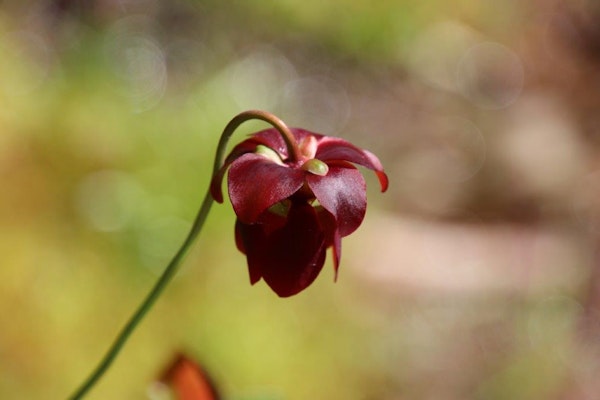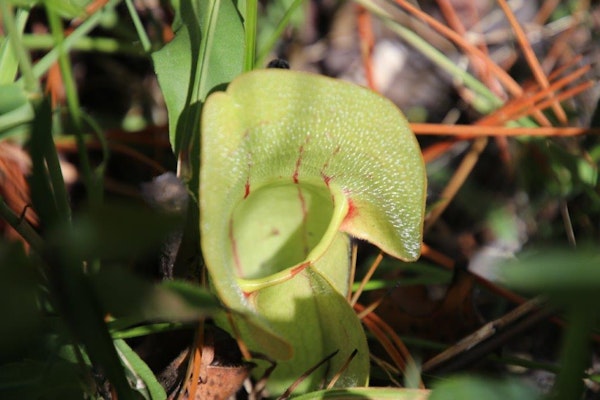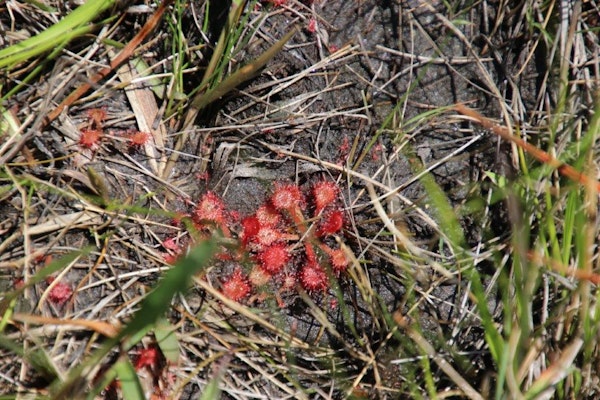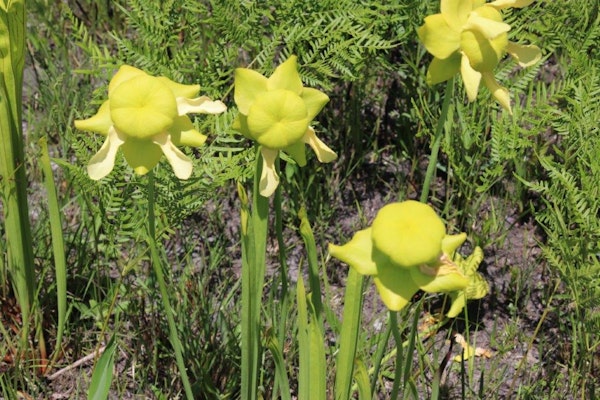Field Notes: Carnivorous Plants in the Midlands

Field Notes by Ed Siggelko
Yellow Trumpet Pitcher Plant (Sarracenia flava)
Habitat: In the sandhills and coastal plain, longleaf pine flatwoods and savannas, openings in pocosins and pond cypress savannas, and pineland seepage slopes. Grows more robust in wetter habitats, the leaves sometimes reaching over 3 feet tall. Flowers typically develop in March through April.
The pitcher plant is becoming less common due to habitat destruction, conservation easements help maintain those habitats.
The leaves can be in four color forms – 1) pale green to bright yellow in full sun with maroon splotch on inside of column from which red veins radiate; 2) bright to deep red on the external surface of the lid and column with a weak maroon spot; 3) uniformly golden-yellow in full sunlight, with course and prominent veins all over, with the interior column spot weak, and; 4) no pigment at all, the mature pitchers being a pale green to yellow. The different forms often grow mixed in the same site.

Sweet Pitcher Plant (Sarracenia rubra)
Habitat: Sandhills and coastal plain, and at the edge of pocosins. In pine savannas it can also be found but is diminutive. Appears to grow more robust in seepage areas along the edge of pocosins and in sphagnum openings in pocosins.
Sweet pitcher plants catch ants, the opening of the column is generally too small for larger insects. The flower generally is taller than the leaves (column). Flowers April – May.


Frog’s Breeches/Hunter’s Cup (Sarracenia purpurea)
Habitat: In the mountains, sandhills and coastal plain counties of the eastern part of the state. Also found in moist, pine savannas, sandhill seepage bogs,and cataract bogs in the mountains.
Frog’s Breech’s differ from other pitcher plants by having leaves that lie horizontally but curve upward, and an erect hood that doesn’t cover the mouth of the plant. Inner surface of the hood bears many stiff hairs that point downward toward the mouth. The open mouth allows the plant to fill with rainwater where insects fall in and are drowned.It is believed that glands secrete a wetting agent into the water that denies the insect buoyancy, so it can not fly off the water’s surface. Flowers April – May.
Dwarf Sundew (Drosera brevifolia)
Habitat: Sandhills and coastal plain, common in longleaf pine savannas, moist longleaf pine flatwoods, and sandy roadside ditches and seepages.
Common name comes from the sticky, dew-covered tentacles on the leaves that in the early morning shine and glitter with the color of the sun’s spectrum. Have some whiteish-pink flowers on stalks up to 2.5” tall April – May. There is also a round-leaf sundew that can be found up in the Southern Blue Ridge Mountains as if prefers cooler temperature.



